Denver’s Proposed Solution to the Affordable Housing Crisis
March 06, 2022 —
Taylor Ostrowski - Colorado Construction Litigation BlogOver the past ten years, Colorado has seen a population growth of almost 15 percent, with many residing in Denver. In fact, in 2020, Denver ranked among the top five cities for inbound growth in the United States. At the same time, from 2010 through 2020, the state’s production of new housing decreased by 40 percent. The decrease in supply, coupled with the increase in demand has exasperated the already rising cost of housing in the state. This, along with other external factors such as job loss due to the COVID pandemic, has resulted in a statewide housing crisis.
The City of Denver is proposing a revision to the municipal code that would expand affordable housing through three main tools: (1) increasing “linkage fees,” (2) requiring new multi-family development to designate a percentage of units to be affordable, and (3) offering zoning and financial incentives. The proposal addresses both rental housing and ownership opportunities. Although it is essential to combat the housing crisis and increased homelessness in the region, it is equally important to understand the impacts the proposed affordable housing ordinance would have on developers, if and when enacted.
Read the court decisionRead the full story...Reprinted courtesy of
Taylor Ostrowski, Higgins, Hopkins, McLain & Roswell, LLCMs. Ostrowski may be contacted at
ostrowski@hhmrlaw.com
Steel-Fiber Concrete Link Beams Perform Well in Tests
December 21, 2016 —
Nadine M. Post – Engineering News-RecordA recent series of dynamic tests demonstrates that there are several types and doses of steel-fiber reinforcement that can be used in performance-based seismic design of coupling beams—headers that link openings in concrete shear walls—to reduce rebar congestion. The tests, performed at the University of Wisconsin, are called “a step in the right direction” by the structural engineer who pioneered the use of SFR concrete.
Read the court decisionRead the full story...Reprinted courtesy of
Nadine M. Post, Engineering News-RecordMs. Post may be contacted at
postn@enr.com
9th Circuit Closes the Door on “Open Shop” Contractor
September 04, 2018 —
Garret Murai - California Construction Law BlogAt the height of the Great Depression nearly one-quarter of Americans were unemployed. In response, Congress enacted a series of laws including the Smoot-Hawley Tariffs Act, which raised tariffs on foreign goods in an effort to spur domestic investment and to increase the number of jobs. Sound familiar?
Background
The Davis-Bacon Act
Among the new laws enacted by Congress was the Davis-Bacon Act which required contractors on federal works projects to pay their workers the wages prevailing in the area where a project was located, also known as “prevailing wages,” in an effort to stem the practice of employers bringing in lower-wage workers from outside the area. The same year that the Davis-Bacon Act was enacted, California enacted its own prevailing wage law modeled after the Davis-Bacon Act and applicable to state and local public works projects.
Read the court decisionRead the full story...Reprinted courtesy of
Garret Murai, Wendel, Rosen, Black & Dean LLPMr. Murai may be contacted at
gmurai@wendel.com
Leveraging the 50-State Initiative, Connecticut and Maine Team Secure Full Dismissal of Coverage Claim for Catastrophic Property Loss
March 23, 2020 —
Regen O'Malley - Gordon & Rees Insurance Coverage Law BlogOn behalf of Gordon & Rees’ surplus lines insurer client, Hartford insurance coverage attorneys Dennis Brown, Joseph Blyskal, and Regen O’Malley, with the assistance of associates Kelcie Reid, Alexandria McFarlane, and Justyn Stokely, and Maine counsel Lauren Thomas, secured a full dismissal of a $15 million commercial property loss claim before the Maine Business and Consumer Court on January 23, 2020. The insured, a wood pellet manufacturer, sustained catastrophic fire loss to its plant in 2018 – just one day after its surplus lines policy expired.
Following the insurer’s declination of coverage for the loss, the wood pellet manufacturer brought suit against both its agent, claiming it had failed to timely secure property coverage, as well as the insurer, alleging that it had had failed to comply with Maine’s statutory notice requirements. The surplus lines insurer agreed to extend the prior policy several times by endorsement, but declined to do so again. Notably, the insured alleged that the agent received written notice of the non-renewal prior to the policy’s expiration 13 days before the policy’s expiration. However, the insured (as well as the agent by way of a cross-claim) asserted that the policy remained effective at the time of the loss as the insured did not receive direct notice of the decision not to renew coverage and notice to the agent was not timely. Although Maine’s Attorney General and Superintendent intervened in support of the insured’s and agent’s argument that the statute’s notice provision applied such that coverage would still be owed under the expired policy, Gordon & Rees convinced the Court otherwise.
At issue, specifically, was whether the alleged violation of the 14-day notice provision in Section 2009-A of the Surplus Lines Law (24-A M.R.S. § 2009-A), which governs the “cancellation and nonrenewal” of surplus lines policies, required coverage notwithstanding the expiration of the policy. The insured, the agent, and the State of Maine intervenors argued that “cancellation or nonrenewal” was sufficient to trigger the statute’s notice requirement, and thus Section 2009-A required the insurer to notify the insured directly of nonrenewal. In its motion to dismiss, Gordon & Rees argued on behalf of its client that Section 2009-A requires both “cancellation and nonrenewal” in order for the statute to apply. Since there was no cancellation in this case – only nonrenewal – Gordon & Rees argued that Section 2009-A is inapt and that the insurer is not obligated to provide the manufacturer with notice of nonrenewal. Alternatively, it argued that the statute is unconstitutionally vague and unenforceable.
Read the court decisionRead the full story...Reprinted courtesy of
Regen O'Malley, Gordon & ReesMs. O'Malley may be contacted at
romalley@grsm.com
20 Years of BHA at West Coast Casualty's CD Seminar: Chronicling BHA's Innovative Exhibits
May 03, 2018 —
Beverley BevenFlorez-CDJ STAFFThe Bert L. Howe & Associates, Inc., (BHA) exhibit has been a fixture at West Coast Casualty's Construction Defect Seminar since the mid-1990's. Through the years, BHA has updated their display, but no matter what year, you could count on the BHA exhibit to provide a not-to-be-missed experience.
2008-BHA's sleek, rear projection display includes a screen that promotes the firm's capabilities that can be seen throughout the exhibit hall. This would be one of many innovations BHA has brought to the West Coast Casualty seminar.
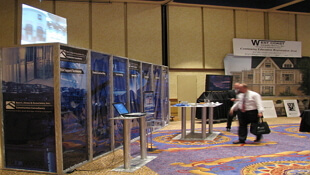
2009-With the success of the rear screen projection, BHA adds additional monitors to provide attendees with more information about BHA.
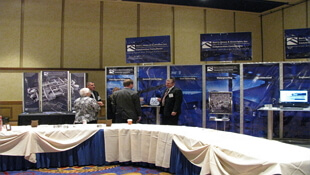
2010-BHA adds an interpretive professional development exhibit targeted to Building Envelope issues allowing adjusters and other non-construction professionals hands on access to the systems and components at the heart of many related such claims.


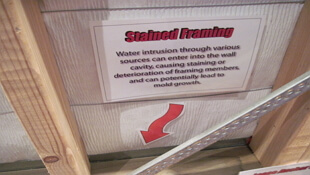
2011-BHA's Swing for Charity challenge is born.

2012-Always innovating, BHA expands its rear projection and professional development offerings to West Coast attendees.

2013-BHA showcases additional capabilities with a twenty-four foot, custom, convex, immersive video experience.

2014-BHA adds an iPhone display to give a hands-on demonstration of their data collection methods.
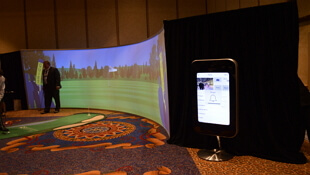
2015-BHA's twenty-four foot , custom, convex, immersive video experience was elevated with two additional rear projection screens, reflecting BHA's newest capabilities and services.

2016-BHA dazzles attendees with their new exhibit comprised of more than 15 integrated, high definition, LCD displays. iPads are stationed on tables to conveniently demonstrate BHA's data collection processes.
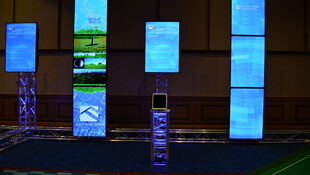
2017-BHA's Swing for Charity Golf Challenge raised $2,225.00 for the National Coalition for Homeless Veterans and $1,900 for Final Salute.
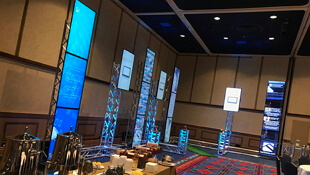
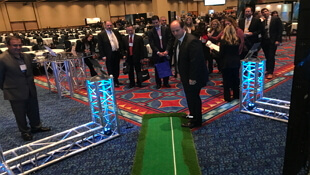
Read the court decisionRead the full story...Reprinted courtesy of
The Treasures Inside Notre Dame Cathedral
May 06, 2019 —
James Tarmy & Eugene Reznik - BloombergParis’s Notre Dame cathedral took more than 200 years to build and just a few hours to burn. The structure’s construction began in the 12th century; six hundred years later, it was rehabilitated by Napoleon in the 1800s. In the interim, kings were crowned underneath its monumental stained glass windows even as the city around it rose, fell, and rose again.
It has served as the setting of numerous historical events, including Napoleon’s coronation in 1804. In August 1944, a special mass in the cathedral attended by General Charles de Gaulle was held to celebrate the liberation of Paris from the Nazis.
The spire contained relics of Saint Denis and Saint Genevieve, the patron saints of Paris, according to Laurent Ferri, a curator in the Division of Rare and Manuscript Collections at Cornell University and former conservateur du patrimoine at the French National Archives. The archbishop of Paris placed the relics at the summit of the church in 1935 to protect the building. “They are now likely reduced to ashes,” Ferri says.
Reprinted courtesy of
James Tarmy, Bloomberg and
Eugene Reznik, Bloomberg
Read the court decisionRead the full story...Reprinted courtesy of
Bailout for an Improperly Drafted Indemnification Provision
February 11, 2019 —
David Adelstein - Florida Construction Legal UpdatesA recent opinion came out that held that even though an indemnification provision in a subcontract was unenforceable per Florida Statute s. 725.06, the unenforceable portion is merely severed out of the indemnification clause leaving the rest of the clause intact. In essence, an otherwise invalid indemnification clause is bailed out by this ruling (which does not even discuss whether this subcontract had a severability provision that states that if any portion of any provision in the subcontract is invalid, such invalid portion shall be severed and the remaining portion of the provision shall remain in full force and effect).
This opinion arose from a construction defect case, CB Contractxors, LLC v. Allens Steel Products, Inc.,43 Fla.L.Weekly D2773a (Fla. 5thDCA 2018), where the general contractor, sued by an association, flowed down damages to subcontractors based on the contractual indemnification provision in the subcontracts. Subcontractors moved to dismiss the contractual indemnification claim because it was not compliant with Florida Statute s. 725.06. The indemnification provision required the subcontractors to indemnify the general contractor even for the general contractors own partial negligence, but failed to specify a monetary limitation on the extent of the indemnification as required by Florida Statute s. 725.06. (The indemnification clause in the subcontract was the standard intermediate form of indemnification that required the subcontractor to indemnify the general contractor for claims regardless of whether the claims were caused in part by the general contractor.)
Read the court decisionRead the full story...Reprinted courtesy of
David Adelstein, Kirwin NorrisMr. Adelstein may be contacted at
dma@kirwinnorris.com
HHMR Celebrates 20 Years of Service!
October 18, 2021 —
David M. McLain – Colorado Construction LitigationI remember it (almost) like it was yesterday. It was September of 2001, and I was a third-year associate at Long & Jaudon, practicing with the construction litigation group. After a long weekend away, I received word that the firm had just announced that it would cease providing legal services. Long & Jaudon, which formed in 1967, had been a stalwart of Colorado’s defense bar, counting among its number some of the finest and most well-respected defense attorneys in the state. To learn that the firm would be shutting its doors was devastating. I would be out of a job.
Soon after L&J’s announcement, Dave Higgins, one of that firm’s senior partners, inquired as to whether I would be interested in starting a new firm focused on supporting Colorado’s construction industry and its insurers. Instead of riding into the sunset of retirement, Dave wanted to leave a legacy. That legacy is Higgins, Hopkins, McLain & Roswell. Shortly after the sprout of the idea, I spent an afternoon at a picnic table in Cheesman Park with Dave Higgins, Steve Hopkins, and Sheri Roswell, sketching out an idea for a new law firm. Twenty years later, HHMR is still here, still serving Colorado’s construction industry and its insurers, and still embodying the principles of service and stewardship upon which the firm was founded.
Read the court decisionRead the full story...Reprinted courtesy of
David McLain, Higgins, Hopkins, McLain & RoswellMr. McLain may be contacted at
mclain@hhmrlaw.com




































































